#vilanova i la geltrú
Text

A room in Can Papiol house-museum in Vilanova i la Geltrú (Penedès, Catalonia).
Since the year 1790 and throughout the 19th century, this was the home of one of the wealthiest families in the small city of Vilanova i la Geltrú: the Papiol family, who owned many vineyards around the city. The house has preserved its 19th century interiors, and nowadays it's a house-museum that allows visitors to see what a 19th century upper class family home was like.
The house includes a library with about 6,000 books written between the 16th and the 19th centuries, as well as a music room, a billiard room, a ballroom where the family hosted music parties and literary meetings, a dining room, the bedrooms, a small private chapel, the servants' rooms, areas for servants to do domestic work and for farmers to do their work, stables, and a little Romantic garden.
Photo by mirades_nostres on Instagram.
#vilanova i la geltrú#catalunya#fotografia#catalonia#palace#europe#interior#interiors#luxury#curators on tumblr#travel photography#elegant#elegance#photography#wanderlust#museum#manor house#historical#19th century#18th century
179 notes
·
View notes
Text

closed
#© victor s. brigola#brigola#closed#plants#entrance#vilanova i la geltrú#spain#architecture#fuji x-pro 3
28 notes
·
View notes
Text

Vilanova i la Geltrú, Barcelona, 1990
Foto: Lluis Ripoll
37 notes
·
View notes
Photo

Aurora will perform at Vida Festival in Vilanova i la Geltrú, Spain on June 30th, 2023!
[tickets]
18 notes
·
View notes
Text
Un giro inesperado by j re crivello
“Apagad la parte lógica de vuestro cerebro, la que dice que uno más uno son dos. Abrid la mente a la posibilidad que uno más uno puedan ser 48 […]o una tarta de manzanas, o un caballo azul” pág. 129, Natalie Goldberg. El gozo de escribir
Hace unos días pase 2 horas en la estación de Toledo. Esperaba junto a otras tres personas el regreso a Madrid. Aquella montaña de tiempo era como una gran bola…

View On WordPress
2 notes
·
View notes
Text
Marilyn —01
Esta semana la serie comienza en domingo, a partir de mañana reflexionaremos sobre la vida de Marilyn y ella nos ayudará a ver aspectos de nuestras vidas o de la sociedad que nos acompañan. Buen domingo j re crivello
La lluvia de anoche ha traído un soplo de descanso. Al observar por la ventana la mezcla de brisa y agua, uno no podía más que pensar en la jungla de asfalto. Voces inconexas,…
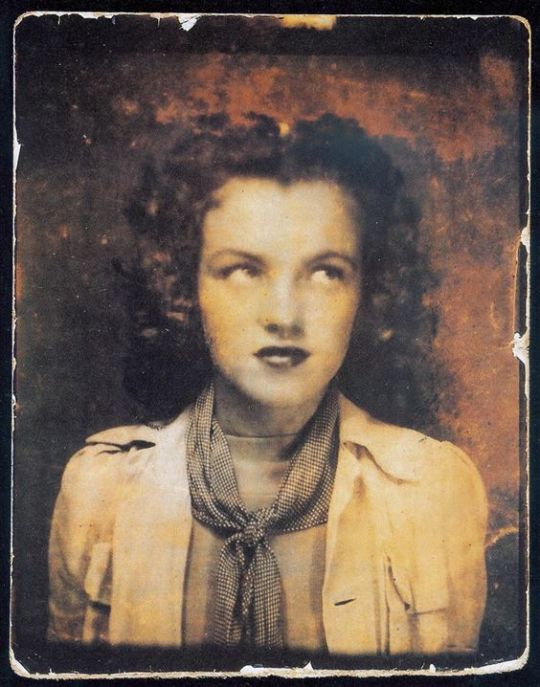
View On WordPress
2 notes
·
View notes
Video
RAMBLA-VILANOVA I LA GELTRU-PINTURA-ART-CAFETERIES-TERRASSES-ARBRES-PAISATGES-LUM-SOL-PINTOR-ERNEST DESCALS por Ernest Descals
Por Flickr:
RAMBLA-VILANOVA I LA GELTRU-PINTURA-ART-CAFETERIES-TERRASSES-ARBRES-PAISATGES-LUM-SOL-PINTOR-ERNEST DESCALS- En una mañana con mucha luz, el sol lo inunda todo con gran luminosidad, la profundidad de la RAMBLA PRINCIPAL de VILANOVA I LA GELTRÚ, con los árboles y las terrazas de cafeterías y restaurantes, un gripo de personas sentadas tomando el aperitivo en agradable temperatura del final del invierno. Escena paisajista con movimiento humano y tratamiento de luces y personajes. Pintura del artista pintor Ernest Descals sobre papel de 50 x 70 centímetros, cuadros elaborados con acuarelas y gouache.
#BARCELONA#CATALUNYA#CATALUÑA#PROFUNDIDAD#ARBOLES#TREES#PERSONAS#RAMBLA#VILANOVA I LA GELTRÚ#RAMBLA PRINCIPAL#GARRAF#ARBRES#TERRASSES#TERRAZAS#TERRAZA#APERITIVOS#MOVEMENT#MOVIMIENTO#LUZ#LIGHT#SUN#SOL#LIGHTNING#URBAN#VIDA#LIFE#PAISAJE URBANO#LANDSCAPE#LANDSCAPING#PAISATGE
1 note
·
View note
Photo
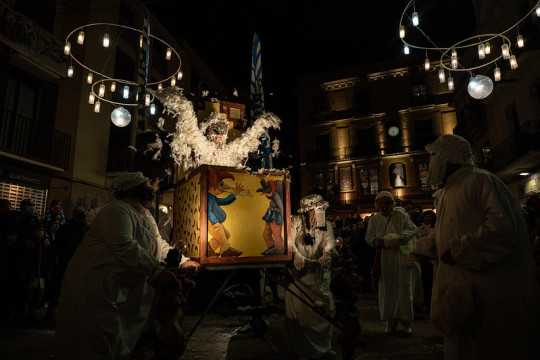




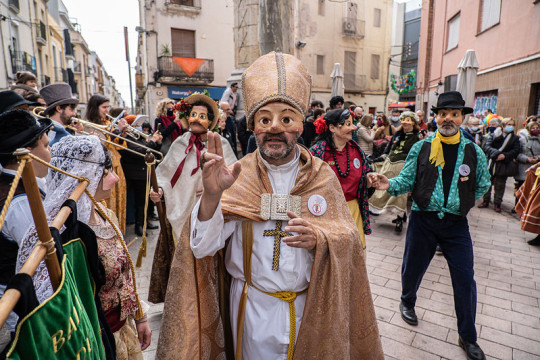



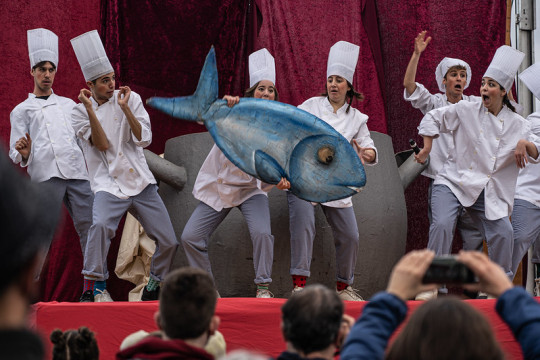
Carnival celebrated in Vilanova i la Geltrú (Penedès, Catalonia), 2022.
The week of Carnival comes right before Lent (the period where traditionally people had to abstain from excesses), so to make up for it, people can do what they want to have fun. Like other festivities with a religious origin, it follows the moon calendar, so every year it falls on a different week. The date is set on 7 weeks after the first full moon after the winter solstice.
The king Carnestoltes arrives to every town in Catalonia to rule for a week, and during his reign he encourages everyone to behave with no considerations for the usual rules of society.
In the Catalan language we have the saying “per Carnaval tot s’hi val”, which means “for Carnival, everything is valid/allowed”. You can make fun of the authorities, dress as you wish, and act in all sorts of crazy ways.
Photos by Vilanova i la Geltrú city hall on Flickr.
#carnaval#tradicions#vilanova i la geltrú#catalunya#fotografia#catalonia#travel#carnival#cultures#culture#wanderlust#ethnography#europe#photojournalism#traditions#flickr#costumes
130 notes
·
View notes
Text

entrance
#© victor s. brigola#brigola#entrance#architecture#monastery#veneer#symmetry#spain#catalunya#catalonia#vilanova i la geltrú#fuji x-pro 3#face
11 notes
·
View notes
Text
youtube
Each area has their own songs that are typical for the Carnival festivity. Here in the Garraf area of Catalonia, we can't have Carnival without this song called El Turuta.
What most people don't know is that this was originally a military march. It was composed in 1926 by the Spanish army musician Román de San José. The reason why it's associated with Carnival celebrations in our area is because Carnival had been forbidden or strictly limited after the Spanish Civil War (1936-1939), during the first years of Francisco Franco's fascist dictatorship of Spain. The city of Vilanova i la Geltrú was only able to bring back their comparses (a local tradition done during Carnival) in 1955, which they hadn't been able to do since before the Civil War. At this point, they needed to hire marching bands, since there weren't enough local marching bands for an event as popular as the comparses. Most of the marching bands they could find were military marching bands of the regiments stationed near the city, so they played some military marches. This song became really popular, and has become an iconic element of Vilanova's Carnival celebrations, and has spread to the surrounding towns in Garraf.
#carnaval#tradicions#vilanova i la geltrú#catalunya#música#marching band#el turuta#music#cultures#carnival#mardi gras
16 notes
·
View notes
Photo

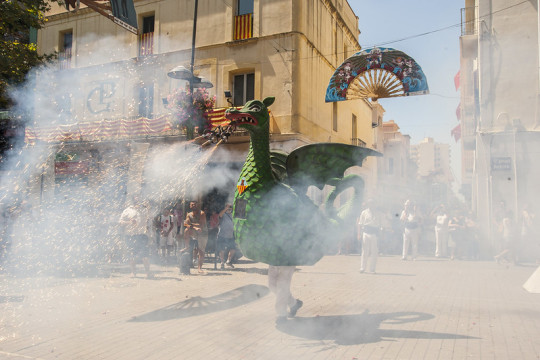
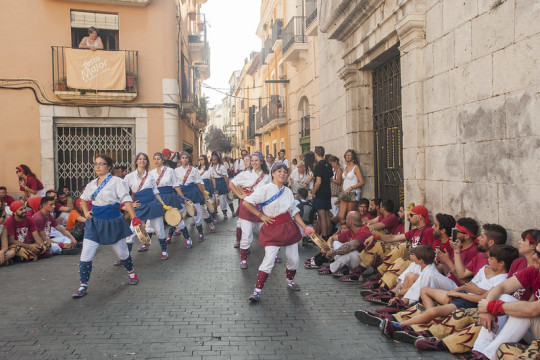





People from Vilanova i la Geltrú (Penedès, Catalonia) celebrating their city’s festa major (local festivity). Each town and city has their own festes majors, set on a different day depending on their patron saints. Festes majors are one of the biggest festivities among Catalan traditions, which are celebrated with traditional dance and music. Though there are festes majors throughout the year, most of them are in summer.
Photos by Ajuntament de Vilanova i la Geltrú on Flickr.
#festa major#tradicions#vilanova i la geltrú#catalunya#fotografia#traditional dance#traditional clothing#folk dance#festivity#culture#cultures#world cultures#southern europe#europe#catalonia#dance#folk clothes#folk dress#travel#curators on tumblr
53 notes
·
View notes
Text

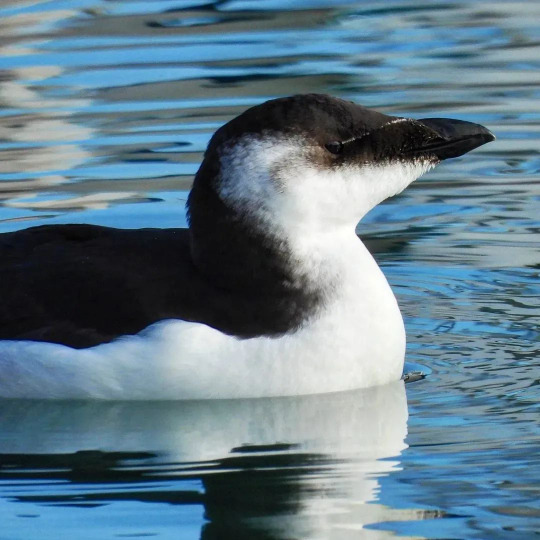


Penguins in the Mediterranean? 🐧
These are razorbills (Alca torda), the closest living relative to the extinct Artic penguins (nowadays there's only penguins in the Antarctic). Razorbills live in the Atlantic Ocean around Northern Europe, but in winter they move down south, reaching the Western Mediterranean. It's common to find them in the coast of the Catalan Countries.
Unlike penguins, razorbills are great at flying and diving (they can fish up to 7 meters deep), but they're bad at walking.
These pictures were taken in the coast of the Garraf area (Penedès, Catalonia), precisely in front of Vilanova i la Geltrú. Tens of razorblades have been seen this year in the Garraf coast.
Photos by park ranger J. Calaf. Info from Parc del Garraf.
#natura#garraf#parc natural del garraf#vilanova i la geltrú#catalunya#nature#bird#birds#penguins#razorbill#razorbills#penguin#birdwatching#wildlife#wildlife photography#natural park#marine animals#sealife#europe#mediterranean
69 notes
·
View notes
Text

glass
#© victor s. brigola#brigola#glass#architecture#typography#blue#white#abandoned#concrete#wall#spain#vilanova i la geltrú#fuji x-pro 3
9 notes
·
View notes
Text

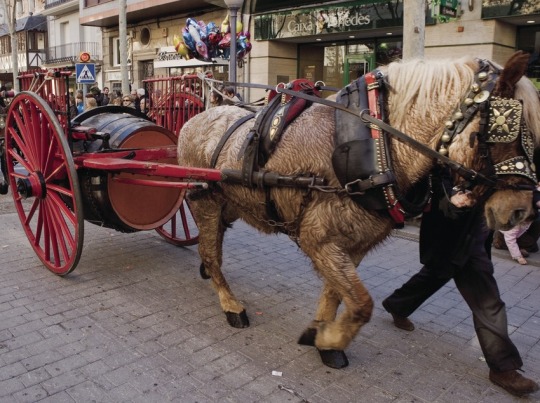


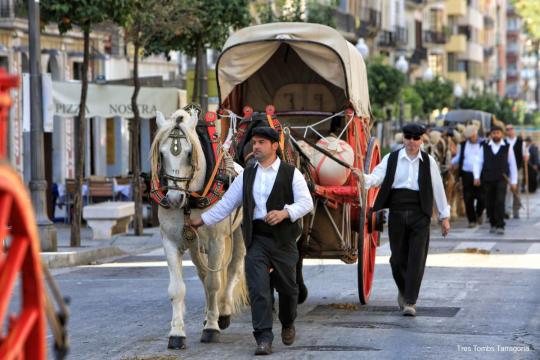
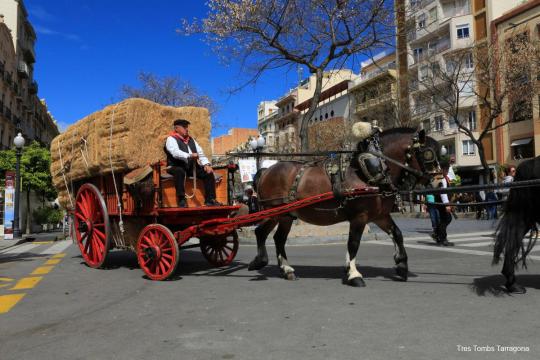






Around the day of Sant Antoni (January 17th), many towns and cities in Catalonia celebrate the festivity of els Tres Tombs, ("the three laps" or "the three turns").
Traditionally, on this day the muleteers and farmers brought their carts and animals to be blessed, since Saint Anthony is the patron saint of domestic animals, muleteers and vehicles. Nowadays, people don't work in the countryside with animals anymore, so the parade consists of old wagons that recall the old trades of the town. Carts and horses go around the city centre three times (that's why it's called "the three laps") to receive the blessing. Some people also bring their pets to be blessed.
It might seem like a Catholic festivity -after all, it became one-, but the origins are found in pagan traditions of pre-Christian times. The ritual of going around a temple to receive a blessing was already done in different Ancient Mediterranean cultures. The Romans walked in circles around a temple to be favoured by the gods, and this passed on to some Catholic traditions of walking around a saint's relic that continue to be done nowadays. It's believed that this practice is related to the Muslim religious ceremony of doing seven laps around the Ka'ba, which ancient Arabs venerated since pre-Islamic times.
In the els Tres Tombs parade, the animals' welfare is taken into account and protected by law. There must be veterinarians who certify the animals' well-being before, during and after the parade, and the marching bands and drummers have to be located in a separate part of the parade so that it won't be too loud for the horses.
Photos in this post were taken in the following cities: Igualada, posted by catalunya.com; Tarragona, by Tarragona Turisme and Gremi de pagesos; Sant Andreu del Palomar, by Tot Barcelona; Cerdanyola del Vallès, by Tot Cerdanyola; Valls, by Experiències rurals; and Vilanova i la Geltrú, by El món els espera. Historical information source: Roger Costa for Sàpiens.
#tradicions#els tres tombs#tres tombs#sant antoni#catalunya#història#cultures#culture#traditions#wagons#horses#saint anthony#ancient rome#ancient mediterranean#igualada#tarragona#sant andreu del palomar#cerdanyola del vallès#vilanova i la geltrú#valls
57 notes
·
View notes
Photo

tsunami beach
#© victor s. brigola#brigola#tsunami beach#square#tsunami#beach#coca cola#sign#typography#wall#spain#vilanova i la geltrú#palm#fuji x-pro 3
21 notes
·
View notes

